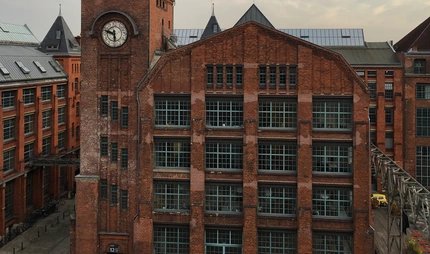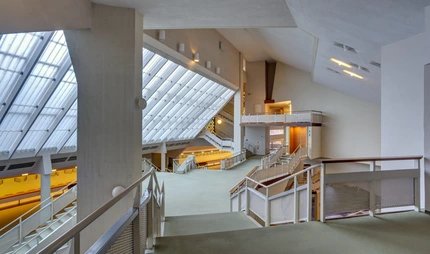
Knorr-Bremse
An Industrial Site at Ostkreuz
The building complex on Neue Bahnhofstraße near the Ostkreuz S-Bahn station immediately catches your eye: the uniform brick façade with rhythmically arranged windows and the arches on the ground floor dominate the streetscape. It takes another look to realise that this is industrial architecture. The offices of Knorr-Bremse AG have returned to the site where they were more than 100 years ago.
It takes another look to realise that this is industrial architecture. The offices of Knorr-Bremse AG have returned to the site where they were more than 100 years ago.
History of Knorr-Bremse
In 1905, engineer Georg Knorr founded Knorr-Bremse GmbH (later Knorr-Bremse AG) in Boxhagen-Rummelsburg. His invention, compressed air brakes for trains, led to the company's rise to become the largest European manufacturer of brakes for rail vehicles. By the 1930s, almost all German lorries were equipped with Knorr brakes. The company used factory buildings on Neue Bahnhofstraße that had been remodelled and expanded in 1913-16 to plans by Alfred Grenander. The brick veneer, arcades, sandstone reliefs, pilasters and dormer windows gave the buildings the appearance they have to this day. Other factory buildings were built to plans by Grenander on Hirschberger Straße in 1922–27, turning the whole into a single factory complex. A particularly striking element is the western tower with its large windows directly overlooking the S-Bahn rail. Both buildings have been listed.
Restoration and Remodelling of Industrial Architecture
The historic building complex has been extensively restored and rehabilitated in recent years, with some new elements added. The historic industrial buildings include offices, shops and service companies. In addition, there is a permanent exhibit on Neue Bahnhofstraße about the history of Knorr-Bremse AG and the development of braking systems.



